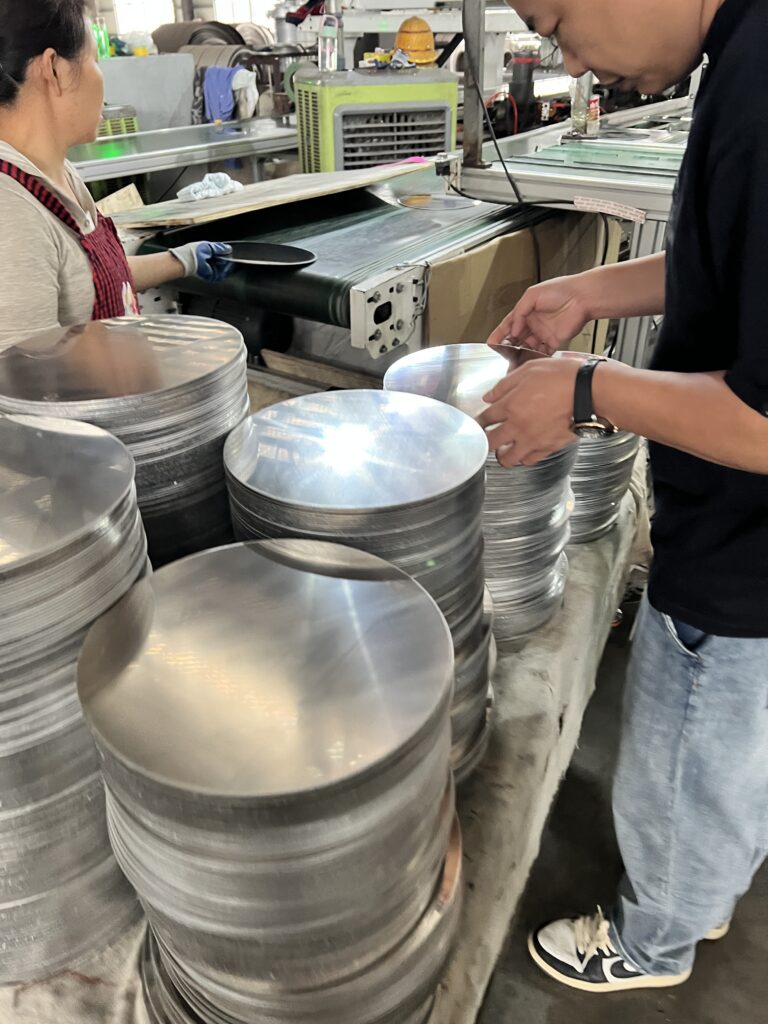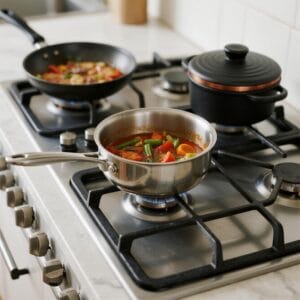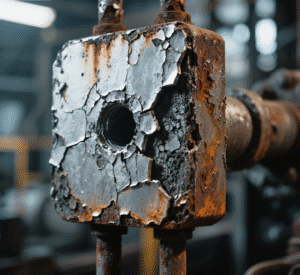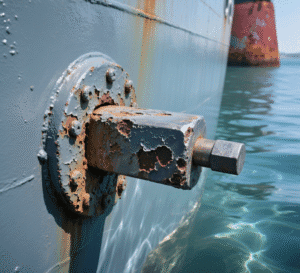Introduction: Ensuring Quality in Triply Circle Production
Triply circles, known for their superior heat conductivity and durability, are a cornerstone of high-performance cookware. To meet the rigorous demands of the market, manufacturers must implement stringent quality control measures throughout the production process. But what steps are involved in ensuring that triply circles meet the highest standards of quality and performance?
Quality control measures in triply circle production include material testing, layer bonding verification, dimensional accuracy checks, and performance testing, ensuring the final product is both reliable and efficient.
Let’s explore the essential quality control practices manufacturers use in the production of triply circles.

How Are Raw Materials Inspected?
Quality begins with the raw materials used to create triply circles, typically stainless steel, aluminum, and sometimes copper.
• Material Certification: Suppliers are required to provide certifications verifying the grade and composition of the metals.
• Visual Inspection: Raw materials are inspected for surface defects such as scratches, dents, or discoloration that could impact bonding or performance.
• Chemical Analysis: Advanced techniques, such as spectrometry, are used to verify the composition of the metals, ensuring they meet industry standards.
Ensuring the quality of raw materials is the foundation of producing high-performance triply circles.
How Is Layer Bonding Verified?
The bonding of the stainless steel and aluminum or copper layers is a critical step in triply circle production. Poor bonding can lead to delamination, compromising performance and durability.
• High-Pressure Testing: The bonded layers are subjected to high pressure to verify the strength and integrity of the bond.
• Ultrasonic Testing: Non-destructive testing methods like ultrasonics detect air pockets, weak spots, or inconsistencies between the layers.
• Peel Testing: Samples are subjected to mechanical stress to evaluate how well the layers adhere under force.
These measures ensure that the layers remain securely bonded throughout the product’s lifespan.
How Is Dimensional Accuracy Ensured?
Triply circles must meet precise dimensional specifications to ensure compatibility with cookware manufacturing processes and to achieve optimal heat performance.
• Thickness Measurement: Specialized gauges measure the thickness of the triply circle material to ensure uniformity across the surface.
• Diameter and Shape Verification: Laser or CNC systems check the circles for accurate sizing and perfectly round shapes.
• Edge Smoothness: Edges are inspected for burrs or sharpness, which could affect safety and assembly.
Dimensional accuracy is vital for maintaining consistency and quality across batches.
How Are Surface Finishes Inspected?
The surface finish of triply circles plays a crucial role in both aesthetics and performance. A smooth, defect-free surface ensures proper heat distribution and bonding during cookware assembly.
• Visual Inspection: Surfaces are examined under high-intensity lighting for scratches, dents, or other imperfections.
• Polishing Quality: The finish is checked to ensure it meets the desired level of smoothness and shine.
• Surface Testing: Coating or treatments, if applied, are tested for uniform application and durability.
Surface quality control ensures that the triply circles not only perform well but also meet aesthetic expectations.
How Is Heat Performance Tested?
Triply circles are designed to deliver superior heat distribution and retention. Performance testing ensures that the material lives up to these promises.
• Heat Distribution Tests: Circles are placed on heat sources to assess how evenly they distribute heat across their surface.
• Thermal Cycling: Samples are repeatedly heated and cooled to test resistance to warping and ensure thermal stability.
• Energy Efficiency: Testing ensures that the material conducts heat efficiently, requiring less energy during cooking.
These tests confirm that the triply circles deliver consistent and reliable cooking performance.
How Are Finished Products Tested for Durability?
Durability is a key selling point of triply cookware. Quality control measures are in place to ensure that the circles can withstand heavy use and extreme conditions.
• Warp Resistance: Samples are subjected to extreme heat to ensure the material does not warp or deform.
• Scratch and Impact Testing: The surface is tested for resistance to scratches, dents, and other physical damage.
• Corrosion Testing: Circles are exposed to corrosive environments, such as saltwater or acidic solutions, to test their resistance.
These measures guarantee that the triply material maintains its performance and appearance over time.

How Is Batch Consistency Maintained?
Manufacturers implement measures to ensure that all triply circles within a production batch meet the same quality standards.
• Random Sampling: Samples from each batch are selected and tested for critical parameters, such as bonding strength, thickness, and heat performance.
• Production Monitoring: Automated systems track each step of the manufacturing process to identify and address inconsistencies in real-time.
• Certification and Documentation: Detailed records are maintained for each batch, ensuring traceability and compliance with quality standards.
Consistency across batches is essential for meeting customer expectations and maintaining a strong reputation.
Claim: Why Quality Control Is Critical in Triply Circle Production
Quality control measures ensure that triply circles meet stringent standards for bonding, dimensional accuracy, heat performance, and durability. These practices are essential for delivering high-performance cookware materials that exceed customer expectations.
Conclusion: The Importance of Rigorous Quality Control in Triply Circles
Producing triply circles requires meticulous attention to quality at every stage, from raw material inspection to performance testing. By implementing robust quality control measures, manufacturers ensure that their products offer superior cooking performance, durability, and reliability.
With these practices in place, triply circles continue to set the standard for high-quality cookware materials, meeting the demands of both home cooks and professional chefs alike.






